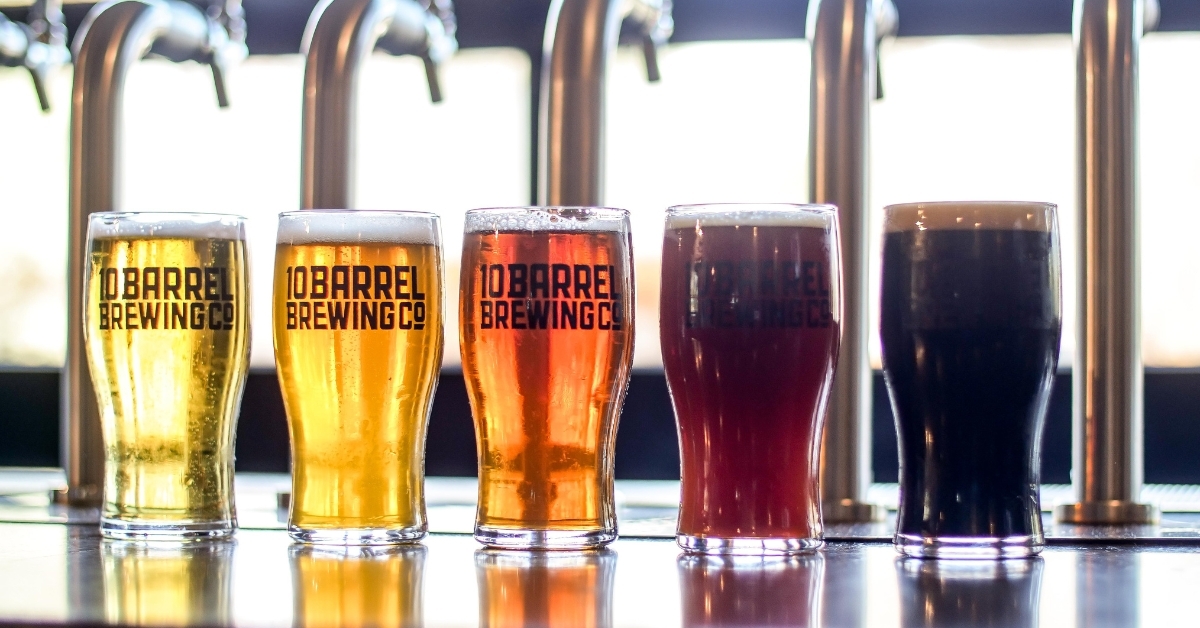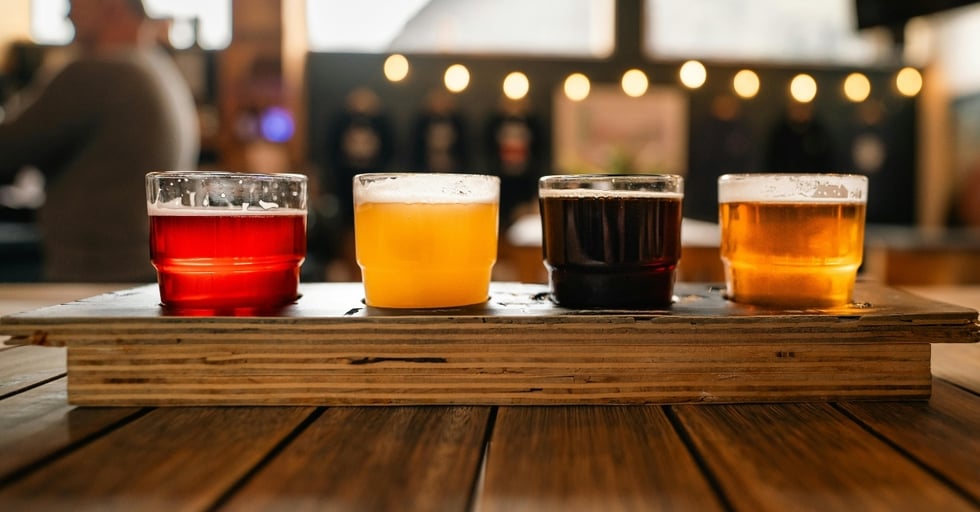The Beer Storage Guide Every Bar Needs (2025)
Foamy pours. Missing kegs. Beer that just doesn’t taste right. It’s not always theft or bad technique—sometimes, the real problem is storage.
If your draft costs are creeping up, your foam loss feels out of control, or bottles keep “disappearing” from the back cooler—this might be why.
It’s not always theft. It’s not always over pouring.
Sometimes, it’s storage.
One of our clients was losing nearly a full keg every two weeks—and had no idea.
No unrecorded comps. No suspicious staff behavior.
But once we dug in, the root cause was obvious: warm walk-ins, tangled draft lines, and bartenders switching kegs before they were empty.
Beer that’s stored wrong doesn’t always go bad—
it just disappears in foam, waste, and untraceable losses.
And by the time the numbers catch it?
The damage is already done.
This guide isn’t about making your beer taste better (though it will). It’s about protecting your margins from the quiet losses you don’t see coming.
What Ruins Beer? (Hint: It’s Not Just Time)
Most storage issues don’t look like disasters. They look, well, like normal.
A sunny shelf by the window. A keg swapped mid-shift. A draft line that hasn’t been cleaned in a few weeks.
But that’s exactly how beer starts to lose value—slowly, and quietly.
- Light Exposure: UV rays trigger a reaction with hops that creates a skunky smell. It only takes a few minutes—especially with clear or green bottles. Dark brown bottles are most effective at reducing light exposure.
- Temperature Swings: A few degrees of fluctuation in the walk-in or keg box can result in foam, waste, and rising variance.
- Oxygen Exposure: This dulls hop character, flattens body, and shortens shelf life. Growlers, crowlers, and partial kegs are especially vulnerable.
- Line Contamination: Dirty draft lines, soap residue on glassware, or faucet contact with beer introduce bacteria and off-flavors.
- Time: Most beer doesn’t improve with age. IPAs fade. Pilsners go flat. Holding onto slow movers is just margin leakage.
The Right Temperature for Beer Storage
Most operators know to keep beer cold—but few realize how sensitive that range really is.
According to the Brewers Association, draft beer should be stored between 34–38°F. That applies across the board—whether it’s a crisp lager or a barrel-aged stout.
Once beer rises above 38°F, you risk foam, spoilage, and flavor drift.
But while storage needs to be consistent, serving temps can vary by style:
Beer Storage vs. Serving Temperatures
Here’s a quick breakdown by style:
| Beer Style | Storage Temp | Serving Temp |
|---|---|---|
|
All Kegged Beer |
34–38°F |
— |
|
Lagers |
— |
38–42°F |
|
IPAs / Pale Ales |
— |
40–45°F |
|
Stouts / Porters |
— |
45–55°F |
|
Belgian Strong Ales |
— |
50–55°F |
⚠️ Serving temps vary—but cold storage should always stay between 34–38°F to maintain beer quality and prevent loss.
✅ Pro Tip: Don’t trust the walk-in’s air temp. Pour a beer, drop in a liquid thermometer, and measure the beer itself.
Beer Storage by Format: Bottles, Cans, Kegs & Beyond
Different formats come with different risks. A can left in a warm hallway might survive the day—but a green glass bottle under the pass window? Not so much.
Here’s how to handle each type the right way:
Bottled Beer
- Store upright to minimize oxidation and keep sediment settled.
- Avoid UV light—especially sunlight and harsh overheads. Green and clear bottles can skunk in minutes.
- Group bottles in full cases or 6-packs to track movement and prevent single bottles from getting “lost” in the cooler.
- Keep bottles away from heat sources like compressors, dish stations, or UV light exposure.
Canned Beer
- Great light protection, but still vulnerable to heat and rough handling.
- Stack carefully. A leaning tower of IPAs is one slammed door away from disaster. Use a flat beer shelf or divider system to stay organized.
- Rotate and date-check—cans feel shelf-stable, but even airtight containers still lose carbonation and flavor over time if not rotated.
Store cold and upright whenever possible to protect freshness.
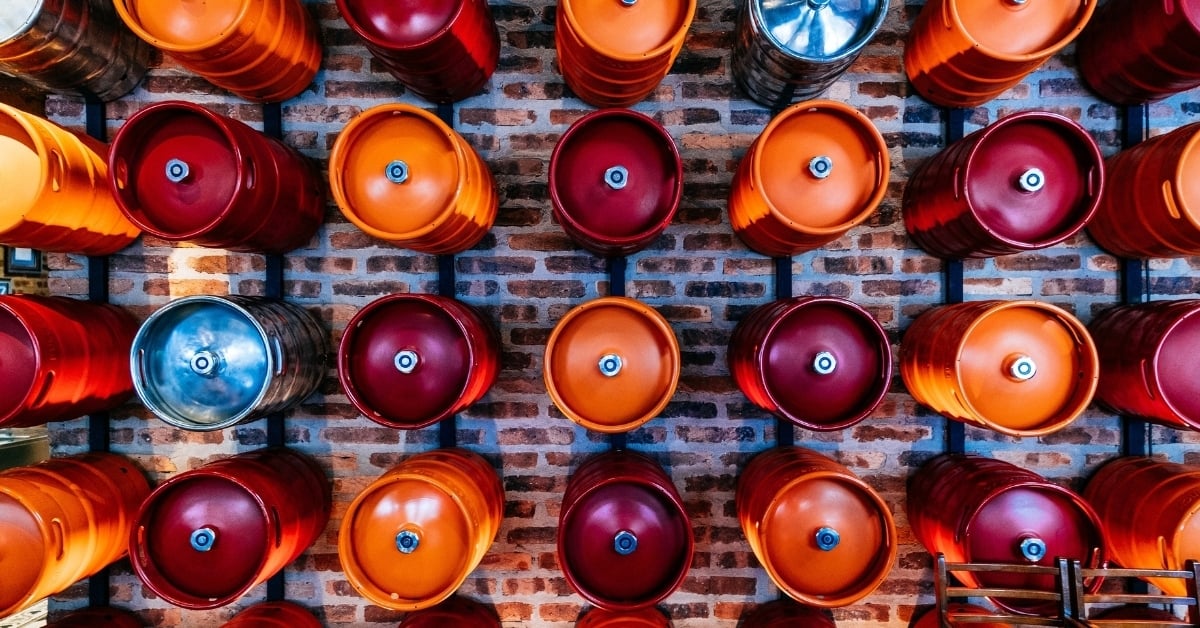
Kegs
This is where most of your beer dollars—and your margin risk—live.
- Let kegs settle for 24 hours before tapping. Foam loss from a shaken keg kills margins.
- Keep temps consistent (34–38°F) and don’t let the keg box door hang open during service.
- Trim excess draft line length to reduce waste and foam buildup.
- Organize your refrigeration space for access, airflow, and efficient keg turnover.
- Check before swapping. Don’t assume it’s kicked.
→ Pause. Sway. Check.
→ If it sloshes, it’s not empty.
Growlers, Crowlers & Corked Bottles
The most fragile formats in the cooler.
- Label clearly and rotate aggressively—you’ve got 24–72 hours before quality drops.
- Store cold and upright at all times.
- Rethink the offer if they’re not moving quickly. Slow sell-through + short shelf life = guaranteed waste.
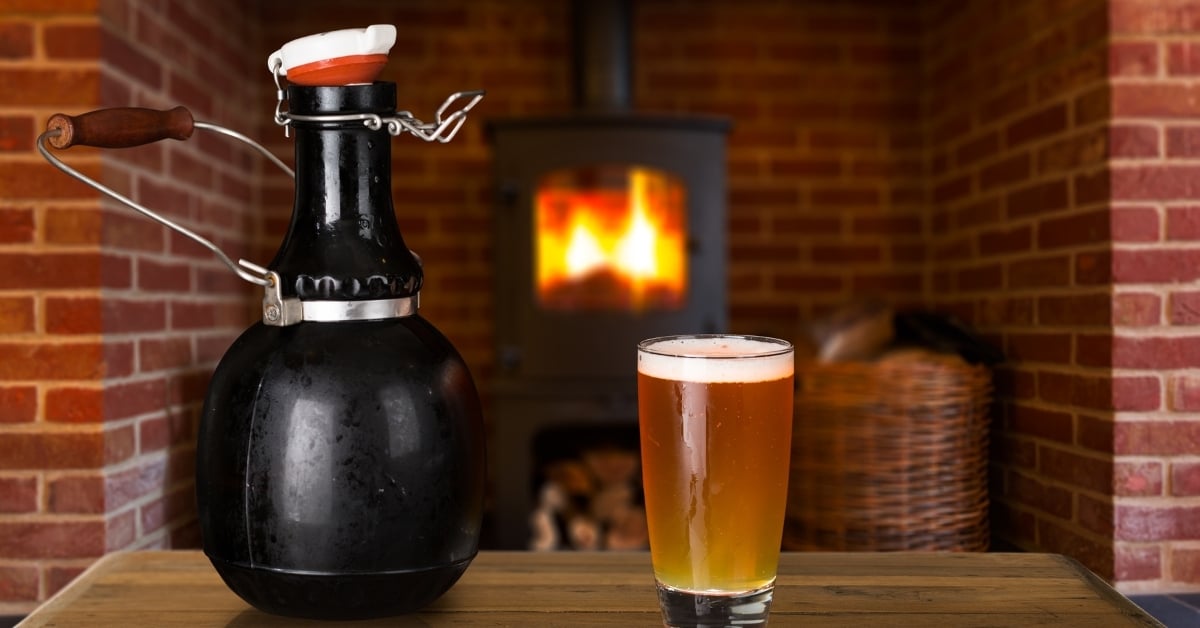
Universal Rule: Enforce FIFO
Why FIFO Still Gets Missed (And What to Do)
FIFO (First In, First Out) isn’t just for kegs—it’s a non-negotiable across bottles, cans, and specialty formats too.
If you don’t actively rotate your stock, older products get buried, forgotten, or served past their prime. That means:
- IPAs that lose their bite
- Seasonal brews that go stale
- Wasted inventory and bloated costs
Build FIFO into your system—from delivery day to nightly restocks. Label clearly, store intentionally, and train your team to grab the oldest stock first.
Draft System Details That Save You Thousands
When your draft system runs right, your margins follow. Once beer is stored at the right temperature and in the right format, your next biggest opportunity is the system it flows through—because most losses don’t happen at delivery. They happen on the way to the glass.
Keg Layout and Line Management
- Keep airflow consistent in the walk-in. Don’t block vents or overload the space.
- Trim excess line slack. Long beer lines mean more beer sitting between the keg and the tap—more waste, more foam.
- Map your layout intentionally. Store kegs logically by line placement, not just space availability.
- Label everything clearly. Misidentified lines create confusion and foam loss.
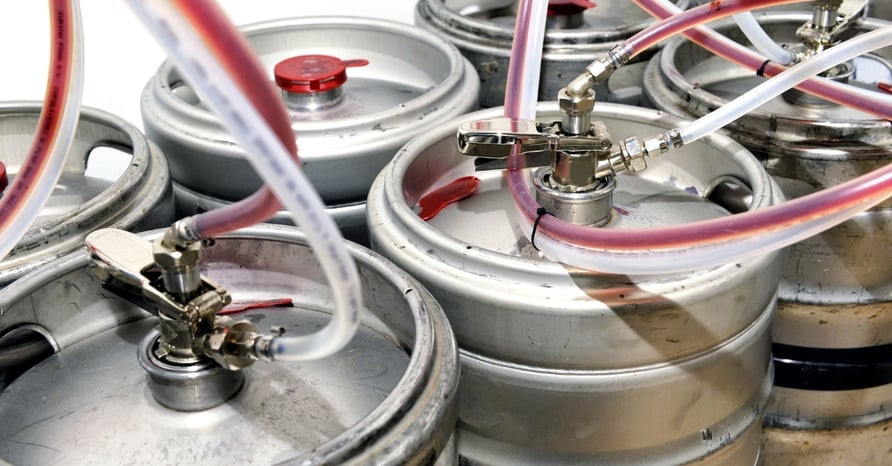
Draft Line Cleaning
Dirty lines destroy product. Bacteria, yeast buildup, and beer stone ruin fresh beer and cause major foam loss.
Follow a set cleaning schedule:
- Nightly: Brush and rinse faucets, cover taps, clean drip trays
- Biweekly: Full chemical line cleaning
- Quarterly: Deep clean—disassemble and scrub every part
Trust but verify. Just because it’s scheduled doesn’t mean it’s done right.
Glassware That Works
Frozen mugs are one of the most common causes of foam loss. Stick to beer-clean, room-temp glasses that won’t shock the beer or kill the head.
Those ‘free’ pint glasses? If the volume doesn’t match your POS pour size, you’re giving away ounces with every serving.
Don’t forget to inspect can and bottle glassware as well for flow, shape, and cleanliness.
Storage Is Just the Start: Service Still Bleeds Profit
Even with tight storage systems, quiet losses creep in during service. That’s why attention to last-mile details matters.
Common Slip-Ups:
- Premature keg swaps: Foaming doesn’t always mean empty. Pause. Sway. Check.
- Frozen glassware: Creates excess head and kills yield. Stick to room-temp glasses.
- Mismatched pour sizes: If a “pint” glass holds 20oz and your POS says 16oz, you’re losing profit.
- Untrained pours: Poor draft technique leads to foam and waste. Staff should know the fundamentals.
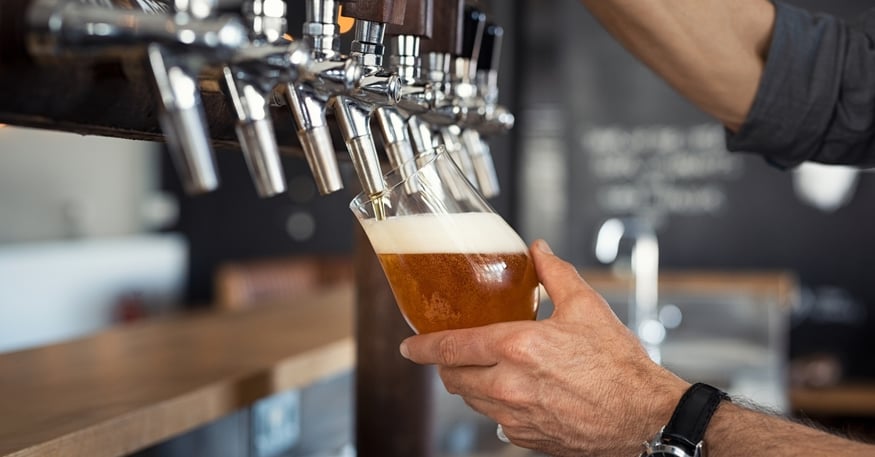
Small Fixes, Big Impact:
- Align glassware with pour sizes and POS entries
- Reinforce staff habits in pre-shift huddles
- Keep a clipboard waste log to capture real loss trends
Storage sets the stage—but execution at the bar finishes the play.

Final Take: Storage Isn’t Sexy—But It’s Profitable
No one brags about their walk-in layout or keg box temperature.
But behind every high-performing bar is a system that protects its product before the pour.
That’s what alcoholic beverage storage really is: protection.
Of quality. Of yield. Of margin.
And when you treat it like a system—something your team understands, maintains, and takes pride in—you don’t just serve better beer.
You waste less. You train better. You make more.
Frequently Asked Questions About Beer Storage
What’s the best temperature to store beer?
Draft beer should be stored between 34–38°F in a refrigerated or insulated container like a walk-in cooler or keg box. Anything warmer increases the risk of foam, spoilage, and flavor drift.
Can I store beer at room temperature?
Short-term? Maybe. Long-term? Risky. Temperature fluctuations and light exposure break down beer fast. If you lack refrigeration space, store only pasteurized cans or low-risk beers—and rotate quickly.
How long does beer stay fresh in storage?
It depends on the format:
- Cans/Bottles: 3–6 months if cold, upright, and protected from light
- Kegs: 60–90 days after tapping (with clean lines and stable temps)
- Growlers/Crowlers: Best within 24–72 hours
Always check the expiry date, and don’t trust packaging alone—pressure-sensitive labels and shrink sleeves won’t tell you if it’s been mishandled.
Can UV light really spoil beer?
Absolutely. UV rays cause light damage, triggering a reaction in hops that creates a “skunky flavor.” Store bottles away from sunlight and avoid harsh overheads. Bonus: UV-resistant doors or solid shelving help prevent exposure.
What’s FIFO and why does it matter?
FIFO stands for First In, First Out—the gold standard in beverage storage. Without it, products get buried and expire. From your beer shelf to your walk-in, a good FIFO system protects quality and margin.
Want Help Tightening Up Your Beer Program?
At Barmetrix, we help operators reduce variance, improve training, and get their beverage programs performing like they should.
We’ve helped venues drop beer variance from over 20% to less than 3%, identified practical storage solutions, and finally make sense of where their margins were leaking.
Book a free inventory audit
or
Download our free eBook: The Ultimate Guide to Profitable Bar Operations
Let’s find your missing beer—and get it back on the books.
